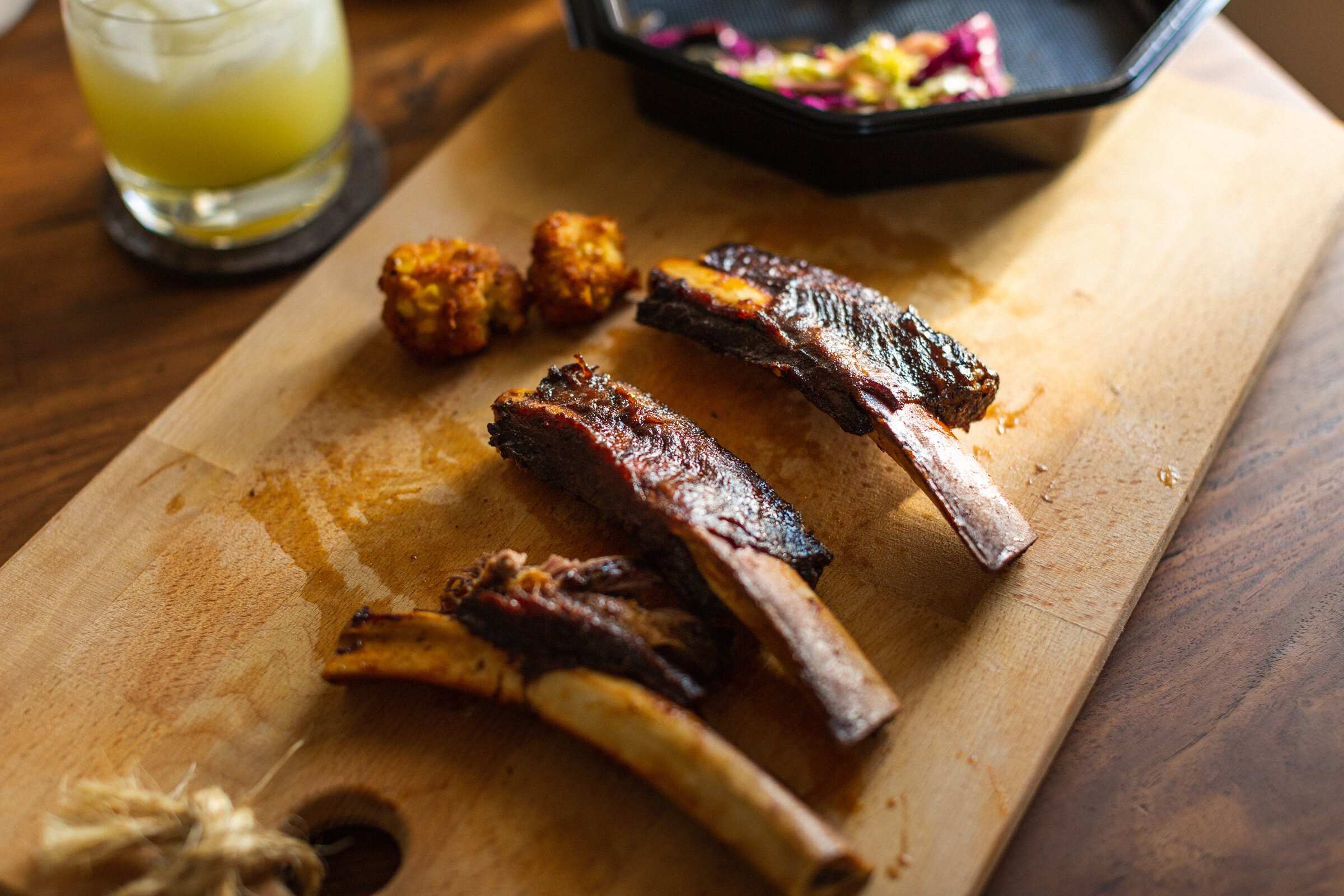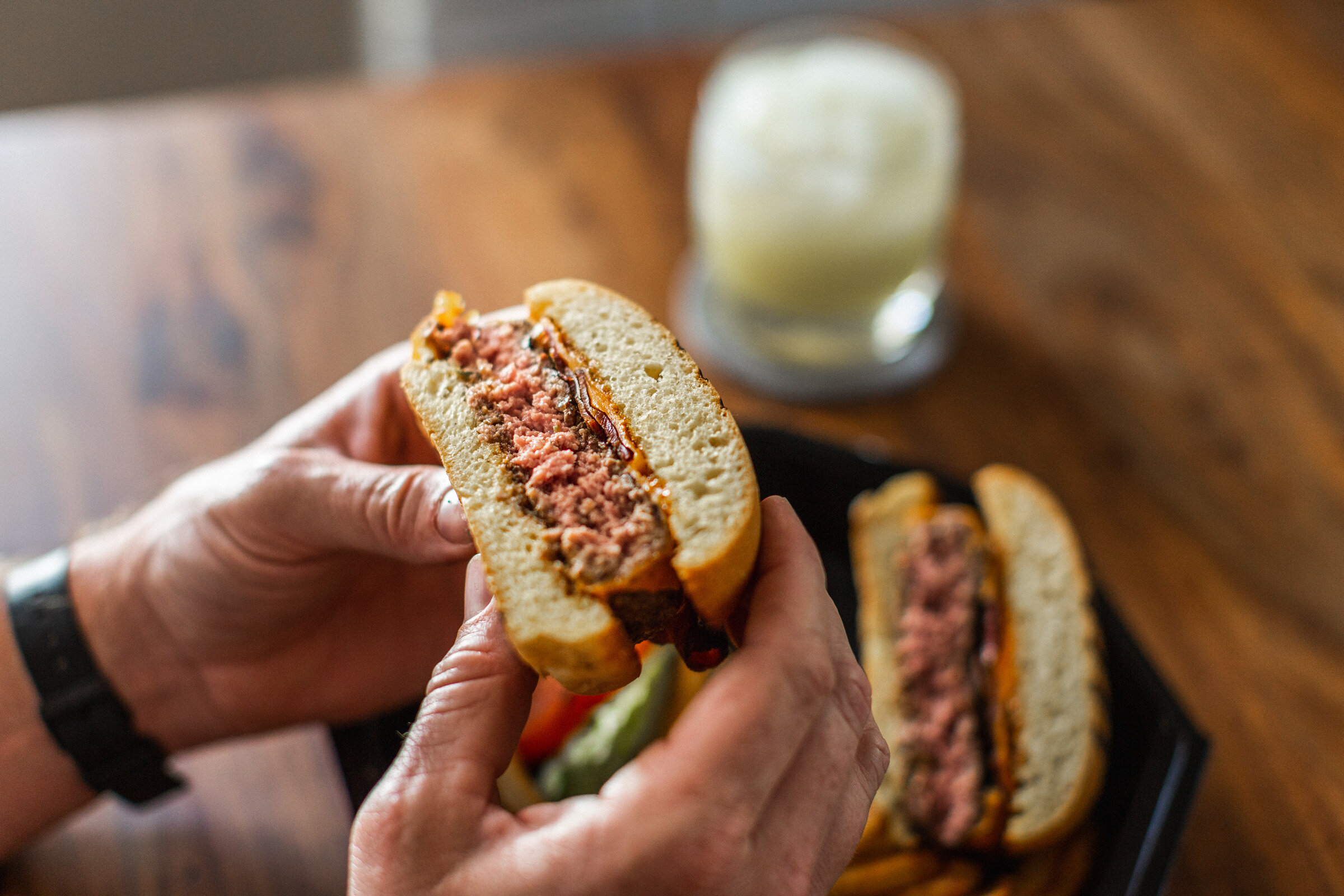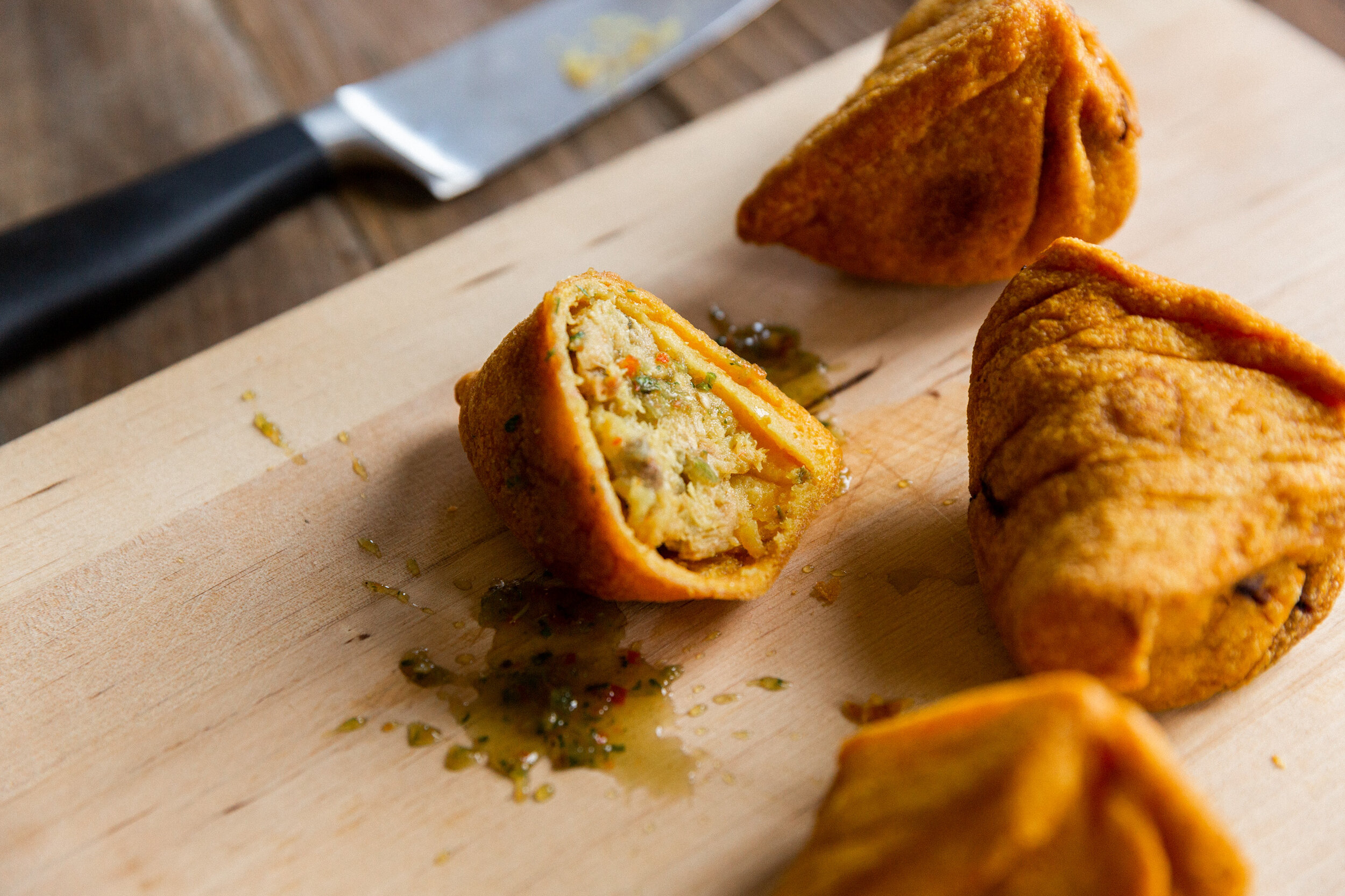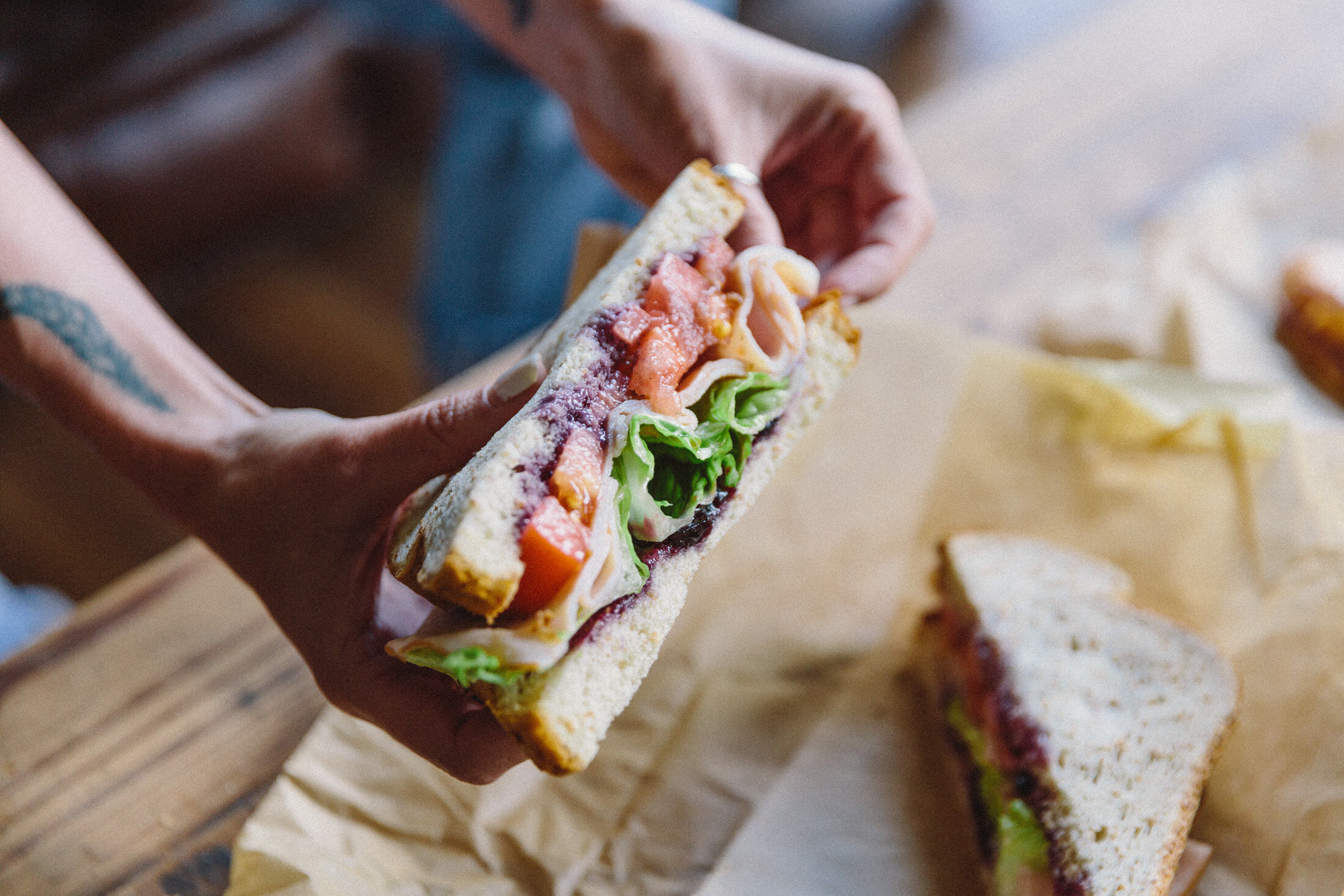The hospitality industry was blindsided by an economic collapse and forced to re-think their entire business model. Food, to-go, was now their only lifeline. How could we help? Working with the team at Dunn&Co, we offered our creative services to local restaurants struggling to build out their to-go program. We photographed 4000 images and donated 350 agency hours, completely for free.
The first time I filmed with the S-Log2 picture profile was also the first time I used the SONY A7s mirrorless camera. That was in March of 2015 while filming a road trip adventure across the great state of Oregon. See the film here. Since then, I've shot maybe 100 films using an array of different Sony's (A7s, A7sii, FS7) and edited/graded countless S-Log2 clips. I don't make the claim to be a great colorist or technical expert. This blog post is simply meant to share my technical and creative approach to using Sony's impressive, and tricky, S-Log2 picture profile.
When it comes to effectively using the S-Log2 profile, I've found there are 4 keys elements: Lighting, exposure, composition and the color grade.
Quick note: When using the SONY A7sii I use Picture Profile 7 (PP7) under the camera settings. My settings are as follows: Black Level: 0, Gamma: S-Log2, Black Gamma: Middle/0, Knee: Auto, Color Mode: S-Gamut, Saturation: 0 and Color Phrase: 0.
Lighting
This part is simple, yet complex. You need high-quality light to make a beautiful image. Simple as that. But you also need to take into account how the lighting assists the story line. It's hard for me to specifically describe how to get high-quality light without knowing the details of the environment and what the story is trying to say. And that is the art. Is it a dramatic story? Is it a bright story? Is it a simple story? The lighting is obligated to be honest about what the story is trying to say and then push that story along. Below are some images I've pulled from Premiere projects to demonstrate the before and after comparisons of the S-Log2 color grade. And how the picture profile handles different lighting scenarios. I've included short write ups under each image about my motivation for the lighting and editing.
Exposure
During that time in March of 2015 a new concept was emerging in the digital camera space called ETTR. Or at least it was new to me. This concept was showing up more and more on S-Log2 forums and all other digital cinema blogs. ETTR stands for, "Expose to the right". For me, this was a new concept all together. From the time I can remember, underexposing images "just a touch" was the way to do it. Normal workflow was; underexpose by a stop or two, protect the highlights, then lift the image in post production. But that's not right. As I've come to learn, the modern digital sensor wants (and needs) as much light as possible- without overexposing highlights obviously.
When I'm working with the S-Log2 picture profile on my Sony A7sii I'm constantly analyzing the live histogram and making sure the image is slightly exposed to the right. Notice the histogram below.
Expose to the right without losing detail in highlights. (ETTR)
Composition
This section is not about the rules of composing an image. If you don't know those, click here. This section is about knowing what the strengths and weaknesses are for any particular codec or picture profile, and then composing the scene to give you ultimate flexibility in post. When composing an image I always consider how the subject is fitting into the scene. With most high-end camera systems, like the RED and Arri, their RAW codec is more flexibility in post which allows the dark and light outliers to be fixed more easily. So, when I know my camera's footage is more flexible in post, I can be more of a risk taker on set. But, when the codec is more compressed, like the SONY A7sii, you need to make decisions on set that will give you more success in post. In my opinion, the healthiest images exist when the histogram has a bell-curve shape (see below). So, often times, I'll adjust my scene, my composition and everything else I can, until my histogram has a bell-curve shape. Then I know that in post I'll have ultimate flexibility when it comes to coloring. Getting this shape can be very tricky and sometimes not even an option. But the more you practice it, the more natural you become at obtaining it. Hint: Know the Zone System. After I get the histogram close to bell-shape, I then adjust my ISO, f-stop and/or filter settings to ETTR.
Color Grade
I've found that starting with pre-made cinematic LUTs really helps me dial in the S-Log2 image. With Premiere's integrated color workspace, you can easily add a LUT over a clip, reduce the intensity of it, then start customizing the grade. Speed is the name of the game when editing video. The faster and more efficiently I can edit and color, the quicker I can move on to the next project. Time is money, eh? So, I bought an S-Log2 LUT package from Vision Color and use these to add over clips in Premiere. Most importantly, if you overexposure the image by 1 or 2 stops, then you should be able to pull down the RGB curve, and that should really bring the image to life (see post curve below). If you have to do the opposite, by lifting the curve in post, you may introduce some noise into the image. Which is fine, just make sure to use a noise reduction program like Neat video. My favorite LUT in this package is probably Vision 6 - LOG32.cube.
Before and After Color Grades
Lighting motivation: I killed all the overhead fluorescent house lights, and opened the garage to get an edge light. I used the spark's bouncing light as my fill.
Lighting motivation: I wanted him back lit by the setting sun. He had white paper on his lap to act as a fill.
Lighting motivation: I wanted the artificial lighting to seemingly go on forever. No escape. In post, I pulled the curve way down. This is a dark story.
Lighting motivation: I wanted contrasting light sources to aid in the complex story. Tungsten vs. Daylight.
Lighting motivation: I positioned her so the sun was falling down on her face and slightly from the side. I knew that would compliment her features. So many mid tones in this image. This was the hero shot. Nice bell-curve shape for this.
Lighting motivation: Landscapes always look better in the golden hour, this lighting will show off the textures and details.
Lighting motivation: I wanted the lighting to look as uninviting as possible. Pull the curve way down in post. Add blue.
South Dakota, July 1, 2016
The main reason to travel is to learn. And when you learn about something new, the experience becomes more vivid and the story about your experience becomes more impactful to tell. And here's my story.
Many times, we get hung up in the ritual of traveling;
We pack heavy.
We experience long, exhausting travel days.
We check in to the hotel and exhale a sigh of relief that we've arrived.
We take pictures. Lots of pictures.
We open a bar tab.
We join in on a group excursion.
Repeat.
Back to work.
But why is the the land there? How did it receive its name? Why are we actually standing on this place and Snapchatting the experience to our friends?
Skyler taking in her surroundings.
Upon visiting Badlands National Park, we needed more. We knew the indians traversed these lands, but why? It was brutal and unforgiving. After our Badlands adventure we drove west towards the Black Hills, South Dakota in search of any indian museum we could find. We saw advertisements for the Lakota Tribe museum and immediately headed in that direction. It felt like we had to pay tribute to those who were here before us. To those souls that once roamed these lands and no longer existed.
My tacoma packed and ready.
Heading west.
The museum, and further readings, revealed a lot. The Lakota people were part of the Sioux Tribe- the tribe that gave our government the most problems in the 1800's. They didn't trust us, and they were willing to brutally fight to protect the lands they had. Eventually, as part of a treaty, the Lakota were given a large chunk of Western South Dakota to call home. The Badlands were part of that treaty and the Lakota named the rugged landscape perfectly, "Mako Sica" or "Land Bad". But, President Lincoln eventually reneged that agreement and signed The Homestead Act of 1862. The American people were pushing west at that time and wanted the western territories of South Dakota, so the Homestead Act gave them permission to pursue those lands despite being previously designated as reservations.
Lakota Warrior.
Skyler found home.
So, as history would have it, Badlands National Park got its named from the Lakota Tribe who, most likely, regretfully named the land after being forced to accept it. And the rest is history.
The following blog post is really a personal journey entry for myself. I read so many good ideas in the book, Everything That Remains, A Memoir by The Minimalists, that I needed a journal type stream-of-thought in which I could analyze the concepts that I learned in the book. This book relates to every person in our current, heavily promoted, consumerist society. So, if you're looking for an inspiring new read, get this book. And if you're located in the Tampa/ St. Pete area, head over to Bandit Coffee to grab a copy.
My definition of Minimalism is the idea of simplifying your life in order to experience more freedom both mentally, physically, and financially. Minimalism can relate to physical things, i.e. not owning more goods than you need, as well as, mental space, i.e. organizing thoughts in order to experience more clarity in life. While reading Everything That Remains, A Memoir by The Minimalists, I circled sentences and paragraphs along the way and made notes of those particular page numbers. The below sections are a recap of concepts in those notes. Obviously, I don't want to spoil the main and important messages of this book. So the below notes are only general ideas.. sometimes paraphrasing, sometimes writing the quote word for word. *My thoughts follow the asterisk.
Relationships / Pg. 36
Every relationship is complicated. Don't let social media and other media outlets fool you. You must work hard in every relationship to work through complications before they mount. Find common ground before it's too late. *Don't run when problems present themselves in a relationship. Face the fire!
Joshua Becker Quote / Pg. 54
"There is more joy and fulfillment in pursuing less than can be found in pursuing more." *Focus on what makes you happy and pursue only that.
Project 333 / Pg. 58
A minimalist fashion project challenge that invites people to dress with 33 or fewer items for 3 months. *We don't need lots of clothes. We think we do, because every advertisement tells us that.
Fight Club / Pg. 90
"Reject the basic assumptions of civilization, especially the importance of material possessions, the things you own end up owning you. It's only after we've lost everything that we're free to do anything." *I feel this. I have debt. I feel crushed from my debt- it owns me. But I'm chipping away at it. Eventually, I'll be free.
"Fuck" is what I titled this section / Pg. 102
We're taught to work foolishly hard for a non-living entity, donating our most precious commodity- our time- for a paycheck. The American Dream is not going to make us happy. The pursuit of this dream can be oppressive. *We all know, the American Dream is built on consuming goods. Beware of this. What is my dream?
Worth my freedom? / Pg. 106
Before we buy something, we should ask ourselves, "is it worth my freedom?" *Amazing practice. Already helped me.
Walk, Don't Run / Pg. 113
"...I was sprinting east looking for sunset, when all I really needed to do was turn around and walk -not run, just walk- in the other direction." *Path of least resistance for your personal happiness. Don't swim upriver when your happiness is down river.
Mission x Fear / Pg. 115
Fear of loss keeps us tied to mediocrity. We must embrace the true calling.. OUR LIFE'S MISSION. *Fear is a bitch. Find your mission and go for it!
Creating v Consuming / Pg. 138
If we are constantly consuming, we are not creating. i.e. consuming TV, social media etc. *Think twice before consuming.
Twitching / Pg. 143
The idea of kicking old habits. 22 days with out something can kill a habit. Try it. *22 days is nothing.
Growth / Pg. 149
"...I've discovered that growth happens more rapidly whenever I step into my discomfort zone." *Always stay out of your comfort zone. It's boring.
Passivity / Pg. 151
Passive tasks are Facebook, email, TV. There's no grand reward for passivity. Fill your life with active activities. *Active moments make me happier.
Thank you for reading. I hope you get a chance to read this book.
Dylan
Photo by Croig.
I've always considered social media to be a tool. And if you know how to use that tool, it can add value to your life. I don't like to get hung up in online political debates, or "sharing" social unrest issues in my feed, or just basic passive searching. I like to seek out inspiration. I want to find people that have passion and ideas that I can learn from.
That idea about using social media to add value to our lives brings me to this story. Last year, I started following a brand called Croig via their Instagram page. I enjoyed the content they were publishing and always got inspired by their ideas and enjoyed the fact that they were located in my hometown of Minneapolis. I thought to myself, "I would love to collaborate with them someday." Fast forward to June of this year. At this point I've quit my job, I'm roadtrippin' around the US, and I got camping gear and film gear loaded up in my truck. I'm planning to stay in Minneapolis for a few days to visit family and the idea pops into my head, "I'm just going to email Croig and see if they would collaborate with me on a short film".
Photo by Skyler June.
After a few emails, we landed on a date that worked for our schedules. The plan was to meet at The Moto Collective shop in downtown Minneapolis around 4pm; start with some shots of the shop, then as sunset approached, hit the open road for some drone footage. (I'm currently flying the DJI P4- love it for it's ease of use, dislike it for it's finicky sensor.) I had no idea what to expect, I've never seen these guys faces, and was about to walk into a motorcycle shop for which I knew nothing about. But this part of filmmaking work is the fun part- walking into a foreign world, and creating a story on the fly. When I arrived, there were 6 dudes wrenching away on a caferacer. Immediately, they grabbed me a beer and we started to chat. They quickly explained how Croig and The Moto Collective is about community and it's not about the individual. I felt this community. It was about both men and women, organizing around a common interest, motorcycles. I felt at home.
Photo by Skyler June.
I started filming. After an hour or so, they suggested we ride to Stillwater, MN. A wonderful town on the border of Minnesota and Wisconsin with a beautiful industrial bridge and open roads. Stillwater wasn't close, it was 45 min in the wrong direction for us. (we had dinner plans to make at 8pm) I was planning to get drone shots near the shop. But, I let go of the control, and went with their suggestion. (ended up 2 hours late to dinner). And, oh my, it was worth it. I got a drone shot over the Stillwater bridge that was crazy to pull off. And I got a sunset drone shot that made me cheer as I was capturing it. Sometimes it's hard for me to just "go with the flow" but when I do, the world pulls me in amazing directions.
Photo by Skyler June.
A few days before this I had a small crash on my motorcycle. Nothing serious, I was grinding on a dirt trail in Northern Minnesota when I hit a soft mud patch and slide on the side. My clutch lever broke and a few other things weren't working properly. I wheeled my 1974 CL 360 into the Croig shop and they fixed me right up and gave me some great advice on further work to do.
These moments are important. Moments when we meet other people with shared passion for life and community. When we step out of our comfort zone and into a world we don't know very well, amazing things can be learned. It's about community and helping and supporting others. It's not about "me". My focus on filmmaking and photography has always been to inspire others. I don't seek money (otherwise I'd be filming informercials). I seek stories that can inspire you.
Meet Scotty; a 71 year old traveler, adventurer, motorcyclist, cook, lover and hiker. I would argue he doesn't move and talk and act like a 71 year old. He's funny. He's strong. I met him randomly in Horse Thief Campgrounds in the Black Hills, South Dakota, while camping there for 2 nights. Every time I rode my motorcycle by his campsite he would wave with a big smile. His campsite was positioned near the front entrance of the campgrounds, so this friendly exchange happened often. Eventually, we struck up a casual conversation about the weather.
Later that day, Scotty approached my campsite and offered a sweet treat as a friendly gesture- a Chocolate Cherry Cake.
During the cake exchange, Scotty gave me his story. When he was 30 years old he quit his corporate job and went to work on a fishing boat in the Gulf of Mexico. Since then, he hasn't looked back. His life has been filled with music festivals, motorcycle road trips across the USA, National Park camping and great relationships. Based on meeting and talking with him, I could only hope my outlook on life is similar to his when I'm 71 years old.
Until this point, my sugar intake has been very little. For breakfast I eat eggs. For lunch I eat a turkey wrap. And for dinner is usually some form of meat with beans and a veggie. But this time, considering this friendly gesture, I was prepared to eat all the sugar. For dinner, we cooked salty ass sausage with beans and greens. The cake was a perfect finisher.
Needless to say, I smoked that cherry cake. It was way to much food for me. But I ate in anyway. Scotty and I made plans to meet up at the Black Hills Bluegrass Festival next year. And maybe Sturgis. I hope these moments come to realization. Till next time.
There are a few reasons why I recently quit my job; to read more, spend time with family, travel and work on passion projects. But most importantly, to spend more time in nature, on my terms. I've always loved trees. A long time ago, someone told me an analogy, "there are only two types of trees that survive major storms, the ones with huge, strong trunks, and the ones that are so nibble they flex back-and-forth in the wind and never break." Interpret that as you want, but it's always been a powerful analogy for the way I view how the world works.
I never just stopped, and looked around, and focused on the trees- their names, their attributes, and why they're there. Trees always remind me of positive ideas; growth, health, long life, fresh air, power, the past, the present, the future and "The Giving Tree". Unfortunately, I don't know much about trees. But, I'm determined to take more time out of my days, and walk around and learn. I recently spent a few days in a Northern Minnesota cabin and I brought along a book titled "Trees of Minnesota" by Stan Tekiela. Nice work Stan.
After a windy-rainy storm ended, we needed to get out of the cabin and stretch our legs. With Stan's book in hand, we roamed around and selected trees on the property to learn about. We dubbed ourselves, "Tree Hunters". It felt nice to slow down and learn something new. I've always thought if we can continue to learn about our surroundings then our minds will stay sharp. During our tree hunt, as we adventured down the half mile long driveway, we encountered a fallen White Spruce tree. The tree snapped about midway up the trunk from high winds earlier that day (a call back to that analogy I love). When this happens, we must clear the path.
Paper Birch
Paper Birch is a moderately heavy, white wood. It makes excellent high-yielding firewood if seasoned properly. The wood is used in furniture, flooring and popsicle sticks.
They live to about 140 years.
Balsam Fir
Small ones are used for Christmas Trees.
The wood is milled for framing lumber, siding and pulped for paper manufacture. Balsam fir oil is an EPA approved nontoxic rodent repellent. The balsam fir is also used as an air freshener and as incense.
Red Pine
The red pine is the state tree of Minnesota.
The wood is commercially valuable in forestry for timber and paper pulp, and the tree is also used for landscaping.
Eastern White Cedar
Part of the Cypress family.
In some cultures, the tree is the subject of sacred legends and is considered a gift to humanity for its myriad uses, among them crafts, construction, and medicine.
The Fallen White Spruce
Stoked to release episode 1 of my short film series "The Dirt Road Narratives". This series is an ongoing episodic filmmaking project started to capture my US road trip this summer. The goal is simple; travel as much as possible, stay outdoors as much as possible, and tell stories along the way. The hope is to inspire people to laugh, think, cry and be happy. There is no plan for what and who to film. Concepts are made up on the day of or day before filming. This is an exercise in pure filmmaking. No budget, no plans, no viewers. Behind the scenes images in the earlier blog post titled "Poetry on Demand".
Halfway through my 1,700 mile drive from Tampa, FL to Ely, MN I decided to conduct a poetry search on the iPhone podcast app. Why? Well, as a filmmaker, narrative story is of the utmost importance, so I think poetry will help me further analyze the different concepts of narrative and how they play a role in our everyday lives. As a result of my random search, I discovered Poetry Off The Shelf by Curtis Fox and it has completely broadened my horizons in the poetry realm- highly recommended.
Fast forward to my first day in Ely with my brother on June 14th, 2016. As we cruise the main street of town we see this quaint farmers market in full swing. We begin to walk around and buy fresh eggs and pickled green beans etc and then I hear this "chik-chik-cha-chik-chik-chika-chik-cha.." sound coming from the distance. I immediately have the vision to create a film featuring a poet typing on an old typewriter sitting on a beautiful vista overlooking a lake in Northern Minnesota. I approach this "chik-chik-cha" artist and introduce myself. His name is Timothy Stouffer- a great local artist who creates hand carved fishing lures and writes poetry under the name "Poetry on Demand". He has a fun business model, people give him a subject to write about on the spot and he creates a narrative right then and there. He doesn't charge a flat fee. He only suggests you tip based on your love of his work.
We exchange a few emails. And next thing you know, we're filming on a remote island in the middle of Cedar Lake, Minnesota. He wrote a beautiful poem that describes the mysterious and elegant waters of Ely, MN and how those waters relate to our lives. I plan to release the film as part of a larger series by end of June.
Life is interesting. I showed interest in a new subject, Poetry, and sure enough, the world presented me with an opportunity to film this subject and share it with my world. Check out the behind-the-scenes below. Film to follow.
Preparing film gear on the remote island.
Building my shitty overhead rig.
Attempting to balance my shitty overhead rig.
Getting in close with my Sony As7ii and Sony 28mm lens.
Thanks Cameron for the behind the scenes.
Somewhere north of St. Louis my trip odometer hit 1,000. To celebrate this small milestone I revved up my moto and hit the cornfield switch backs of Missouri.
I attached a ramp to my trailer hitch to bring along my 1974 Honda CL 360. The cover already shred to pieces due to high winds (amateur move). It's definitely a squirrelly set up- I constantly watch it from my rear view mirror and I'm way more sensitive to road conditions now. So far, Atlanta and St. Louis, by far, have the worst roads. The best highway was Interstate 57 in Kentucky.
It's interesting how when you're affected by something more and more, you become more sensitive to it. If I didn't have this bike on the back of my truck, I would never remember the crazy smooth ride on I-57 north of Paducah, KY.
Locked and loaded.
Unloading at mile 1000.
Rest stop.
I've been busy and overwhelmed lately starting up a new production company, Folklore Film Co. A company that features filmmakers and photographers exploring the values, traditions and ideas of humanity.
FFCo's mascot, Brother Bear, is an old soul who's seen it all. His stories are powerful and rooted in an authentic observation of the world around him. The new tees are available on www.ffco.tv. By buying a tee, you're supporting this new endeavor which is sure to be a wild ride.
Folklore Bear Tee $20
My Sony A7Sii rig build out with cage, sound recording, matte box and more. Perfect small tool for rough-and-tumble, run-and-gun filmmaking.


















































































